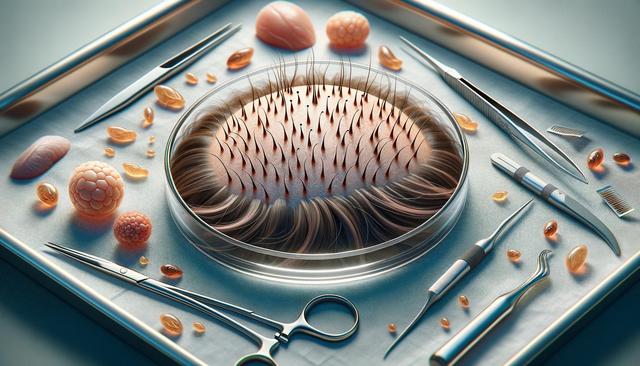
Understanding Hair Transplant: What You Need to Know
What Is a Hair Transplant?
A hair transplant is a surgical technique that involves moving hair follicles from one part of the body, typically the back or sides of the scalp, to areas where hair is thinning or balding. This method is primarily used to treat androgenetic alopecia, also known as male or female pattern baldness. The transplanted hair behaves like natural hair and typically grows throughout a person’s lifetime. There are two main techniques used in hair transplantation: Follicular Unit Transplantation (FUT) and Follicular Unit Extraction (FUE).
FUT involves removing a strip of scalp from the donor area, from which individual follicular units are extracted and implanted in the balding area. On the other hand, FUE involves the direct extraction of individual follicular units from the donor area using a small punch tool. Both methods have their own advantages and are chosen based on the patient’s hair type, extent of hair loss, and desired outcome.
Hair transplant procedures are typically performed under local anesthesia and may take several hours depending on the number of grafts required. While it is considered a safe and effective treatment, it’s important for individuals to consult with a qualified specialist to determine if they are a suitable candidate.
Who Can Benefit From a Hair Transplant?
Not everyone experiencing hair loss is an ideal candidate for a hair transplant. These procedures are most effective for individuals who have:
- Stable areas of hair growth (donor sites)
- Realistic expectations of the results
- Hair loss due to pattern baldness or scarring
People with diffuse hair loss or certain medical conditions that affect hair growth may not be suitable candidates. Additionally, hair transplants are generally recommended for adults whose hair loss patterns have stabilized. Performing the procedure too early may result in uneven distribution of hair as the hair loss progresses.
It’s also worth noting that the success of a transplant depends on factors like hair density in the donor area, hair texture, and scalp elasticity. A thorough evaluation by a hair restoration specialist is essential to determine the most appropriate treatment plan.
The Procedure and Recovery Process
The actual hair transplant procedure involves several steps. First, the surgeon prepares the donor and recipient areas. For FUT procedures, a strip of scalp is removed and dissected into individual grafts. For FUE, grafts are extracted one by one using specialized tools. These grafts are then implanted into tiny incisions made in the balding area.
After the procedure, patients can expect some swelling and mild discomfort, which typically subsides within a few days. Most people can return to normal activities within a week, although strenuous activities should be avoided for at least two weeks.
Post-procedure care is crucial for optimal results. Patients are usually advised to:
- Avoid touching or scratching the transplanted area
- Follow a careful hair-washing routine
- Take prescribed medications to prevent infection or inflammation
- Attend follow-up appointments as scheduled
The transplanted hair typically falls out within a few weeks, a normal part of the process known as “shock loss.” New growth usually begins within three to four months, with full results visible after about a year.
Understanding the Costs and Considerations
The cost of a hair transplant can vary widely depending on factors such as the technique used, the number of grafts needed, the clinic’s location, and the surgeon’s expertise. It’s important for individuals to consider the long-term value of the procedure rather than just the upfront cost.
While hair transplants can offer a permanent solution, they may not be a cure-all. In some cases, additional sessions may be required to achieve the desired density. Furthermore, patients may still experience hair thinning in untreated areas, which could necessitate future treatments.
Choosing a reputable clinic and an experienced surgeon is essential to reduce the risk of complications and ensure natural-looking results. Questions to ask during consultations include:
- What technique will be used and why?
- How many grafts are recommended?
- What are the risks and possible side effects?
- What does the post-operative care involve?
This approach helps patients make informed decisions and sets realistic expectations about the outcome.
Alternatives and Complementary Treatments
For those who are not suitable candidates for a hair transplant or are not ready for surgery, several non-surgical options are available. These may include:
- Topical treatments that encourage hair growth
- Oral medications that slow hair loss progression
- Low-level laser therapy (LLLT)
- Scalp micropigmentation (SMP) for the appearance of fuller hair
These methods can also be used to complement a hair transplant, particularly to enhance the appearance of non-transplanted areas or to maintain the overall health of the scalp and hair.
Each option comes with its own set of benefits and limitations, and results may vary from person to person. A tailored approach that combines different treatments is often recommended to address the unique needs of each individual.
Before deciding on any treatment, it’s wise to consult a licensed dermatologist or hair loss specialist who can guide the patient through the pros and cons of each method and help design a comprehensive hair restoration plan.


